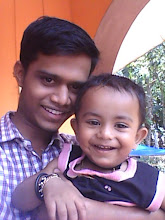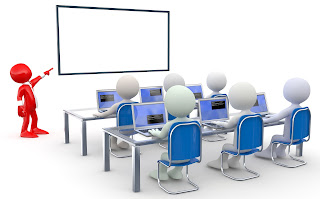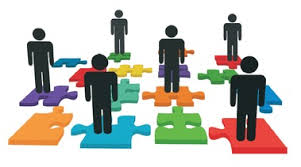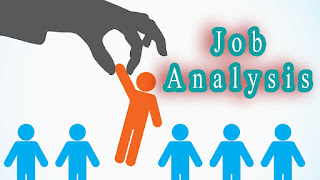Friday, 22 January 2016
Organizational policy
TYPES
OF TRAINING
• Skills Training
• Refresher Training
• Cross-functional training
• Team Training
• Creativity Training
• Diversity Training
• Literacy Training
Methods
of Training
• On the job training methods
ü JIT
ü Coaching
ü Mentoring
ü Job Rotation
ü Apprenticeship Training
ü Committee Assignments
• Off the job training
ü Vestibule training
ü Role playing
ü Lecture method
ü Conference/discussion approach
ü Programmed instruction
INTERNAL
MOBILITY
The
lateral or vertical movement of an employee within an organization is called
internal mobility
PURPOSES
OF INTERNAL MOBILITY
• Improve organizational
effectiveness
• Improve employee effectiveness
• Adjust to changing business
operations
• Ensure discipline
TRANSFER
• PURPOSES
– To meet the org requirements
– To satisfy employee needs
– To utilise employees better
– To make the employees more
versatile
• To adjust the workforce
• To provide relief
• To reduce conflicts
• To punish employees
TYPES
OF TRANSFERS
• Production transfers
• Replacement transfers
• Rotation transfers
• Shift Transfers
• Remedial Transfers
• Penal Transfers
INDUCTION/ORIENTATION
01:36 Rahul R
Orientation
or induction is the task of introducing the new employees to the organization
and its policies, procedures and rules
INDUCTION
– OBJECTIVES
• Removes fears
• Creates a good impression
• Acts as a valuable source of
information
INDUCTION
PROGRAMME – STEPS
• Content
• Socialization
• Follow up
Monday, 18 January 2016
RECRUITMENT & SELECTION
22:56 Rahul R
Recruitment
is the process of locating and encouraging potential applicants to apply for
existing or anticipated job openings
SOURCES
• Internal Sources
• External sources
METHODS
OF RECRUITMENT
• Internal Methods: promotion and transfers, job
posting, employee referrals
• Direct Methods: campus recruitment
• Indirect Methods: advertisements
• Third Party Methods: private employment search
firms, employment exchanges, gate hiring and contractors, unsolicited
applicants/walk-ins, internet recruiting
SELECTION
• Selection is the process of
picking individuals who have relevant qualifications to fill jobs in an
organization
SELECTION
TESTS
• Intelligence tests
• Aptitude tests
• Personality tests
• Achievement tests
• Simulation tests
• Assessment center
SELECTION
INTERVIEW
• The non-directive interview
• The directive or structured
interview
• The situational interview
• The behavioral interview
• Stress interview
• Panel interview
HUMAN RESOURSE PLANNING PROCESS
22:53 Rahul R
HRP
PROCESS
- Analyzing organizational
plans
- Demand forecasting
- Supply forecasting
- Estimating the net human
resource requirements
- Action plan for
redeployment, redundancy/retrenchment
- Forecast future supply from
all the sources
- Action
plan for recruitment, development
- 8.
Modify the organizational plan
- 9.
Retention plan
Analyzing
organizational plans
• HRP should start with analyzing
the organizational plan into production plan, technological plan, plan for
expansion, diversification etc, marketing plan, sales plan, financial plan.
• Helps in forecasting the demand
for human resources
Demand
forecasting
• Review the existing job design
and analysis keeping in view the future capabilities, knowledge and skills of
present employees
• Forecasting of the quality of
human resources (skill, knowledge values, capabilities etc) in addition to
quantity of human resources
• Important forecasting methods
are:
a) managerial judgment, b)
statistical techniques c) work study techniques
SUPPLY
FORECASTING
to
obtain the data and information about the present human resource inventory
Estimating
the net human resource requirements
The
difference between overall human requirements and future supply of human
resources is the Net HR Requirements
Action
plan for redeployment, redundancy /retrenchment
• If future surplus is estimated,
the orgn has to plan for redeployment, redundancy etc
• If surplus is estimated in some
jobs/departments employees can be redeployed in other jobs/departments where
the deficit of employees is estimated
• Orgn should also plan for
training or reorientation before redeployment
• redeployment, redundancy
/retrenchment programmes
• Outplacement
• Lay offs
• Leave of absence without pay
• Work sharing
• Reduced work hours
• Voluntary retirement/early
retirement
• Attrition
Forecast
future supply from all the sources
If
deficit is estimated in any department and in the entire organizations,
management has to forecast the future supply of human resources from various
sources
Action
plan for recruitment, development
• Promotion plan
• Training and Development plan
• The Productivity plan
• Recruitment and selection plan
Modify
the organizational plan
If
future supply of HR from all the external sources is estimated to be inadequate
or less than the requirements, the manpower planner has to suggest the
management to alter or modify the organizational plan
Retention
Plan
• Adjustment of the salary levels
with those of the comparable industries so as to remove inequalities
• Providing opportunities for
career development, provide training facilities, adopting the policy of
promotion within, self development, challenging work assignment, systematic
promotional procedure etc
• Introduction of effective
consultation and negotiating machinery, grievance redressal, conflict
resolution
• Extensive training and
development facilities
• Selection procedure
• More conducive work environment
and extensive fringe benefits
JOB ANALYSIS AND JOB DESCRIPTION
22:49 Rahul R
JOB
ANALYSIS & JOB DESCRIPTION
- Collection of background
information
- Selection of representative
position to be analyzed
- Collection of job analysis
data
- Developing a job description
- Developing a job
specification
- Developing employee
specification
Job
Description
• Job title: tells about the job title, code
number and the department where it is done
• Job summary: a brief write-up about what the
job is all about
• Job activities: a description of the tasks
done, facilities used, extent of supervisory help etc.
• Working conditions: the physical environment of job
Social environment: size of work group
JOB DESIGN
22:46 Rahul R
Job
design is defined as the process of deciding on the content of a job in terms
of its duties and responsibilities; on the methods to be used in carrying out
the job, in terms of techniques, systems and procedures and on the relationships that should exist between the
job holder and his superiors, subordinates and colleagues.
Goals
of Job Design
• To meet the organizational
requirements such as higher productivity, operational efficiency, quality of
product/service etc.
• To satisfy the needs of the
individual employees like interests, challenge, achievement or accomplishment,
etc.
To integrate the needs of the
individual with the organizational requirements
Approaches
to Job Design
.
Engineering Approach
2. Human
approach
3. The
Job Characteristic Approach
Engineering
Approach (F.W.Taylor, 1911)
• Work should be scientifically
studied.
• Work should be arranged so that
workers can be efficient
• Employees selected for work
should be matched to the demands of the job
• Employees should be trained to
perform the job
• Monetary compensation should be
used to reward successful performance of the job
Human
Approach (Herzberg)
• Motivators like achievement,
recognition, work itself, responsibility, advancement and growth
• Hygienic factors like working
conditions, organizational policies, inter-personal relations, pay and job
security
• Laid emphasis on the
psychological needs of employees in designing jobs
The
Job Characteristic Approach (Hackman and Oldham)
• Skill variety
• Task identity
• Task significance
• Autonomy
• feedback
Job
Design Options
• Job Rotation : Movement of an employee from
one job to another
• Job Enlargement: Adding more and different tasks
to a specialized job to provide greater variety. This is called horizontal job
loading
ROLE OF PERSONNEL MANAGER
22:42 Rahul R
Role
of Personnel Manager
- Administrative Roles
- Operational Roles
- Strategic Roles
1.
Administrative Roles
a) Policy maker
b) Administrative expert
c) Advisor
d) House keeper
e) Counselor
f) Welfare officer
g) Legal consultant
2.
Operational Roles
a) Recruiter
b) Trainer developer, motivator
c) Coordinator/linking pin
d) Mediator
e) Employee champion
3.
Strategic Roles
a) Change agent
b) Strategic partner
PERSONNEL MANAGEMENT
22:37 Rahul R
Personnel
management is defined as a set of programmes, functions and activities designed
to maximize both personal and organizational goals
Features
of Personnel Management
• PM is concerned with employees,
both as individuals, and as a group in attaining goals.
• It is concerned with the
development of human resources
• PM covers all levels of employees
and categories of employees. It covers both organized and unorganized employees
• It applies to the employees in
all types of organizations in the world
• PM is a continuous process
requiring constant reviewing, up gradation and integration
• Aims at attaining the goals of an
organization, individual working therein and society in an integrated way.
• PM is a responsibility of all
line managers and a function performed by staff managers across the
organization
• It is concerned with managing
human resources at work
• PM is the central sub-system of
an organization
• Pm aims at securing unreserved
cooperation from all employees
Functions
of Personnel Management
1.
Managerial Functions
2.
Operative Functions
1.
Managerial Functions
a) Planning
b) Organizing
c) Directing
d) Controlling
2.
Operative Functions
a) Procurement functions
b) Development
c) Motivation and compensation
d) Maintenance
e) Integration function
f) Emerging issues
b)
Development
- Training
- Executive development
- Career planning and
Development
- Human Resource Development
c)
Motivation and Compensation
- Job design
- Work scheduling
- Motivation
- Job evaluation
- Performance appraisal
- Compensation and
administration
Incentives and
benefits
d)
Maintenance
- Health and safety
- Employee welfare
- Social security measures
e)
Integration Function
- Grievance redressal
- Discipline
- Teams and teamwork
- Collective bargaining
- Employee participation and
empowerment
- Trade unions and employee
association
- Industrial relations
f)
Emerging Issues
- Personnel records
- Human Resource Audit
- Human Resource Research
- Human Resource Accounting
(HRA)
- Human Resource Information
System (HRIS)
- Stress and Counseling
- International Human Resource Management
Subscribe to:
Posts (Atom)











